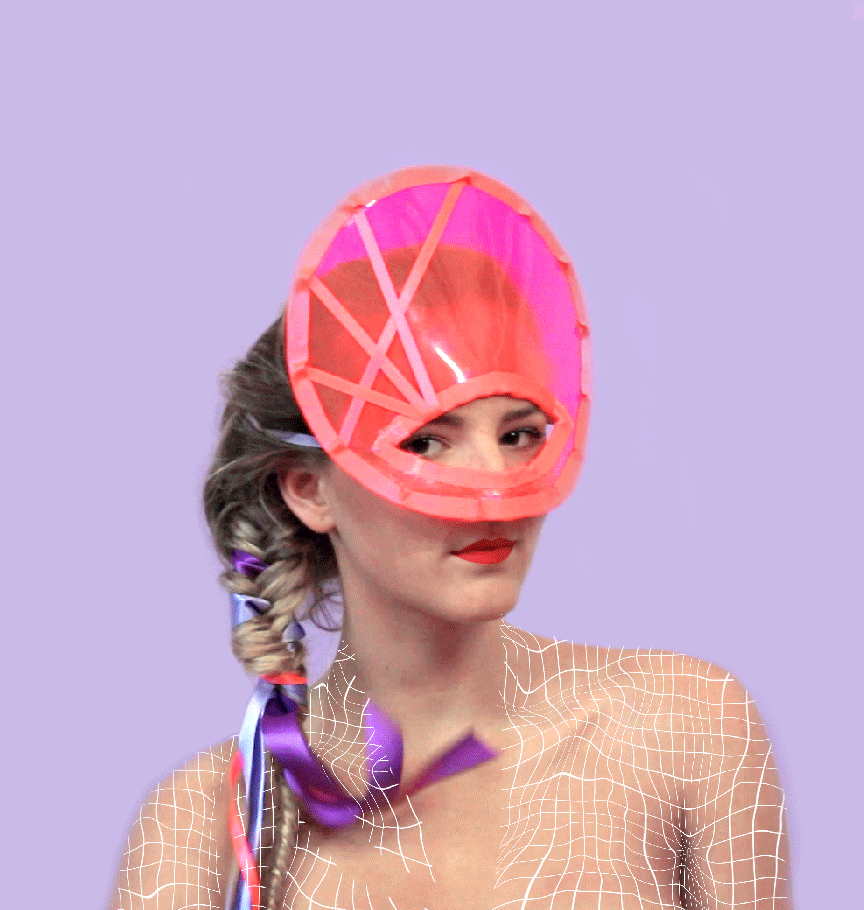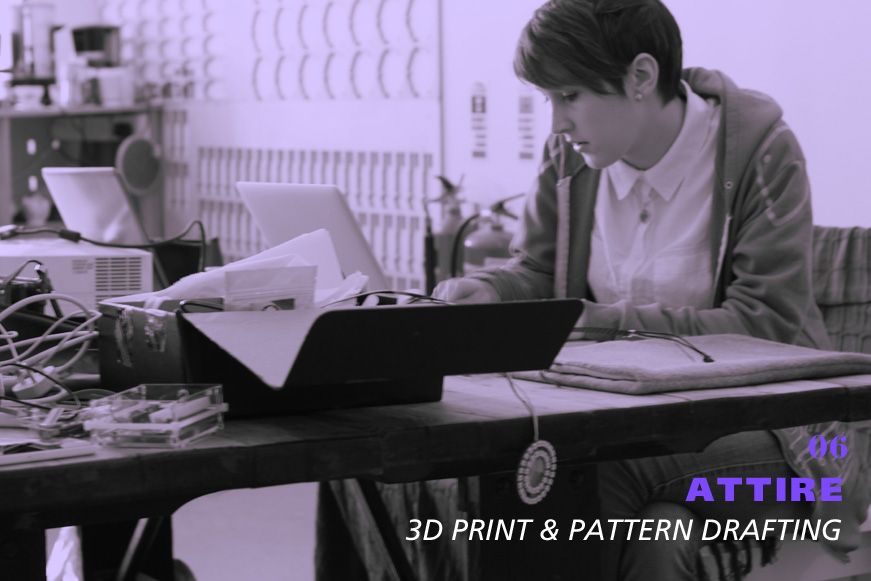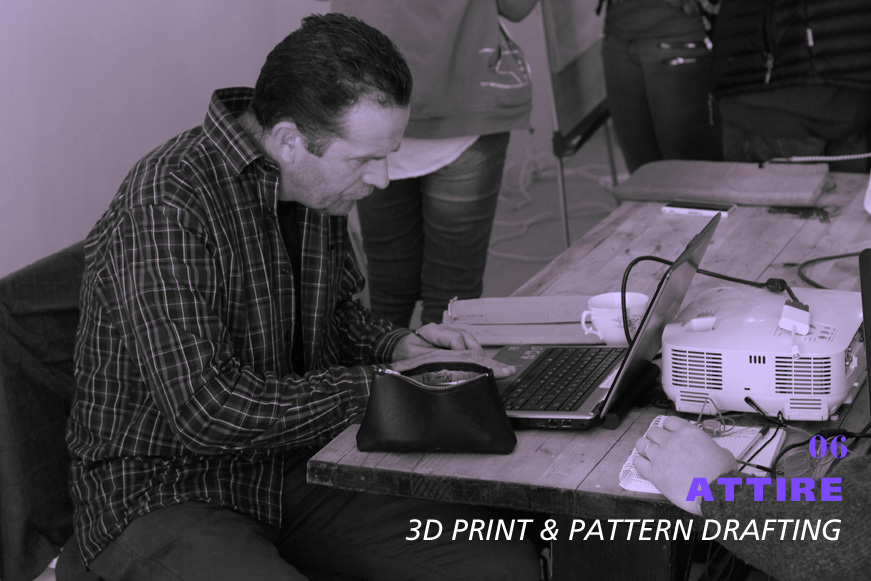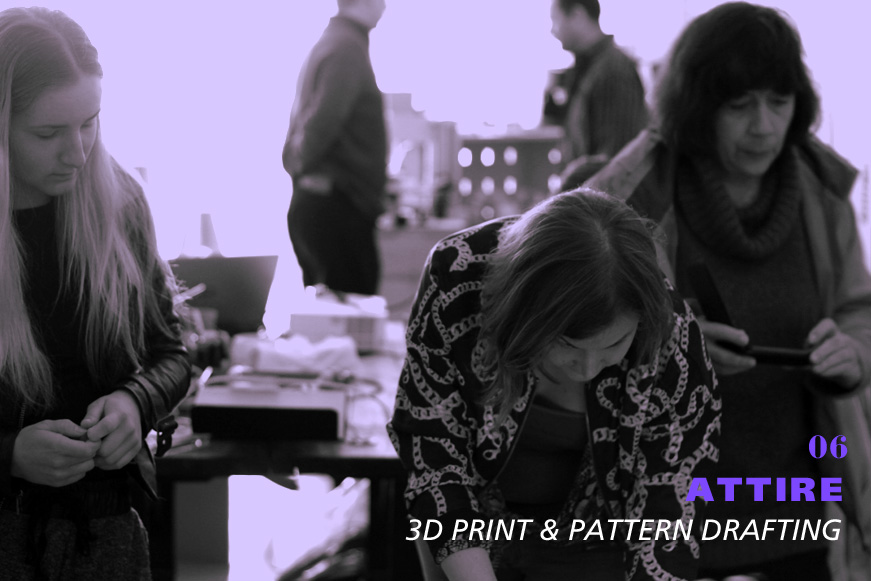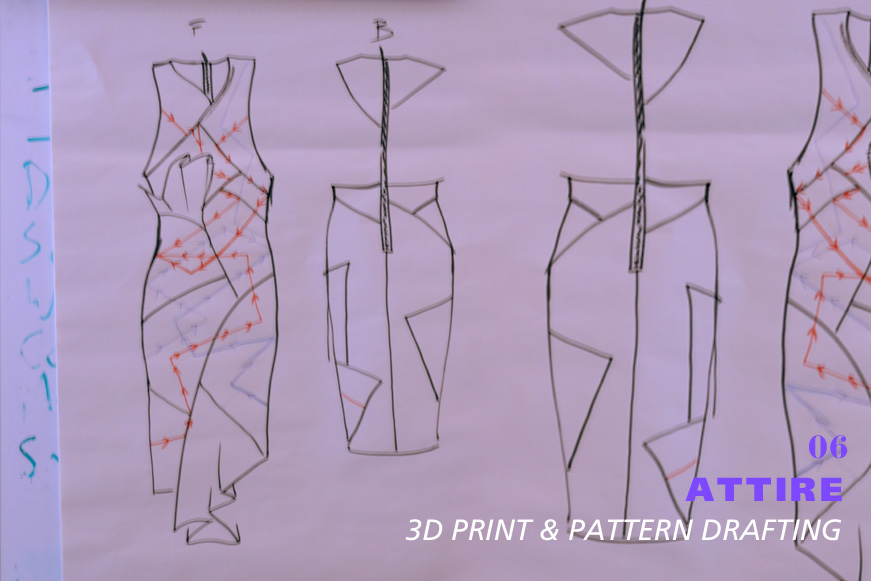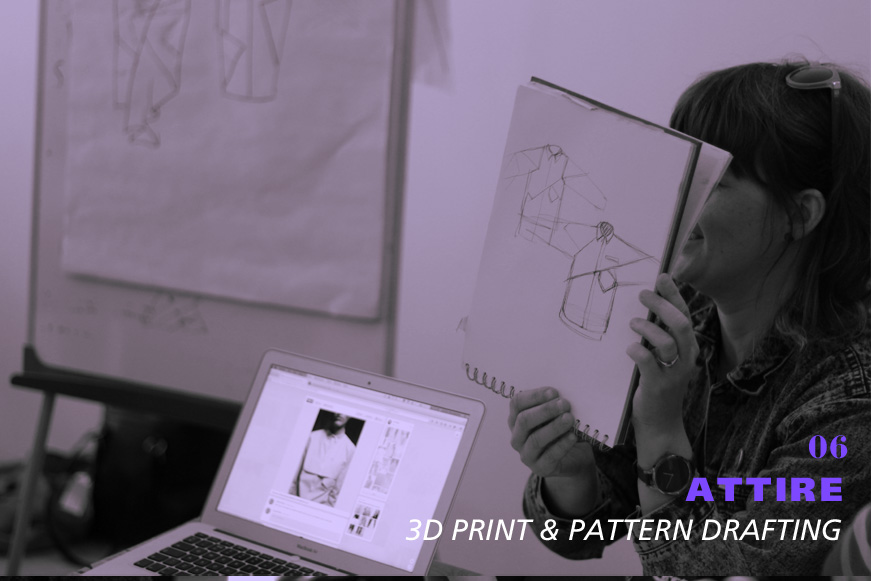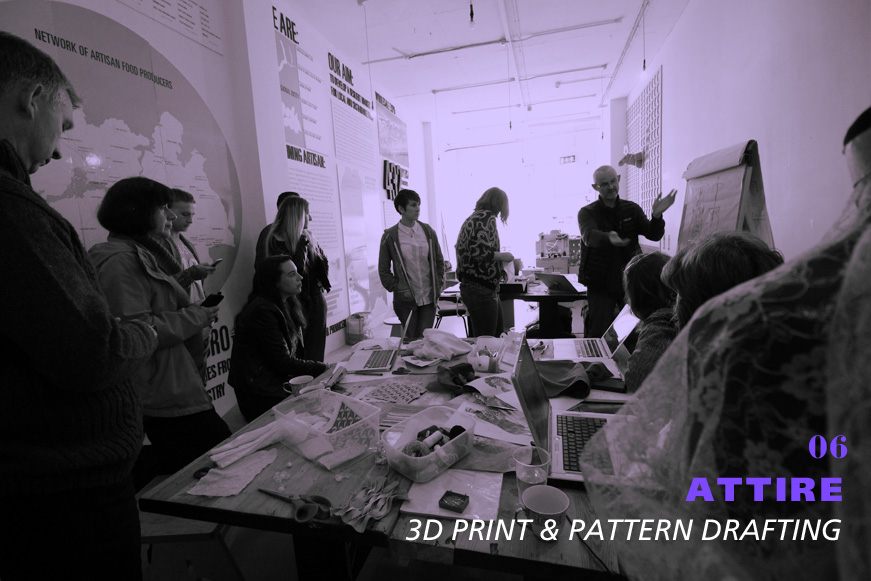3D PRINTING & PATTERN DRAFTING / 2
Saturday workshop was very straight to the point as we were looking for the possible solutions for the issues addressed on Thursday. The individual issues and proposed solutions are further described under electronics issues and fashion issues.
Electronics Research Summary from Workshop 05
The electronics group were tasked with two main research areas for this workshop:
- Detecting touch from a specific source
- Accurately detecting distance between the two garments
Touch:
It’s relatively easy to detect a touch to our garment – It is more of a challenge to detect a touch from a specific source. All touches to our garment register the same way – This is not a bad thing. It keeps our battery life down, sensor profile slim and complexity low… But it means the information coming from these touch panels is simplistic, on or off. This is not good enough to be able to distinguish between a touch to our garment from an observer and the fellow performer. So what’s the solution?
Our two proposed touch solutions rely on the same basic principal, confirmation. The two garments will communicate with each other about who has been touched and who is touching. A garment which has been touched, will listen to see if the other garment says that is is currently touching something. If this is true, we can assume with relative certainty that the garments are touching and we can ask the touched garment to react accordingly.
Solution one involves a button concealed in a cufflink or other wired button which when pressed, will put the garment into “touching mode” for 5 seconds or so. If during this time the second garment is touched, it will react. This solution while easy to implement has the limitation of needing to be wired – which means it is harder to conceal – and it interrupts the natural movement of the pair while pressing the button.
Solution two is mostly the same as the first, except that it will be wireless and thus much easier to conceal in an accessory or piece of hand worn jewellery, such as a ring. The button may also be replaced by a touch sensor similar to the touch pads on the garment itself, making the touch gesture more natural. Finding a stable (and small!) method of wireless communication is the challenge with this method.
Distance:
The problem of distance measurement between two specific objects (without the need to point a sensor of some kind) within an enclosed environment is one without an obvious, off the shelf solution.
Both Wifi and Bluetooth signal strength are too variable to rely on owing to the differing signal patterns from device to device and the effect competing signals have on signal strength.
Traditional ultrasonic distance sensors also would not be suitable. If you’ve ever had a bat’s echolocation explained to you, this is the same stuff. Usually, one ultrasonic device sending out a pulse measures the length of time it takes for it’s own echo, which has bounced off the nearest object, to return.
This solution does not suit us because we only want garment A to light up in response to garment B, not in response to an approaching wall!
Our solution, proposed by Dave Hunt, is to use traditional ultrasonic distance sensors in a non traditional manner. We will be using 2 devices, one on each garment.
The way this will work is when the first device sends out a pulse, it will stop listening for replies for a defined amount of time, T. When the second device hears this sound, it will wait for the same amount of time, T, before sending a response. The first device will pick this response up and be able to calculate the distance based on the amount of time it took for the “round trip” of signals to happen.
The use of delays in this solution is required in order to ignore the initial echo effect upon which the usual operation of these ultrasonic devices depends on.
Fashion Research Summary from Workshop 06:
The fashion group had these two main issues to address and try to come up with suitable solutions
- Incorporate grid LEDs display for complex animation into the tigh fit dress without loosing the integrity of random LEDs strip pattern
- Design the innovative and contemporary menswear outfit that would be directly synchronized with the dress
Why is the random placement of LEDs strip important?
Textile manipulation that we are going to use based on the swatch Lucia made to ‘hide’ the LEDs in the dress is sustainable and interesting. It uses the LEDs strip placement to create a 3D lifted pattern/texture around the dress. This results in displaying rather than hiding the LEDs even if the lights are off. It is one of the reason why we want to keep the visual integrity of random placement. Another reason is to use the LEDs in a more innovative and unpredictable way rather than a square screen. Random routes of the LEDs strips are also essential to show effectively the ‘traveling light’ animation when the dress is touched /activated.
Why is the grid placement of LEDs is important.
To achieve the maximum from the animation we need to have the LEDs placed in the grid. The software that can scan any image and translate it into the animation. This is a crucial feature to allow the dress to animate on a higher level. Our goal is to achieve the maximum space for the complex animations together with seemingly random patterns.
What to be aware of in relation to the fashion appeal?
The dress is designed to be a tight fit so we need to be clever and inventive about how to achieve it’s fit. We can run into danger if the combination of LEDs with a tight fit and sheer treatment could end up looking like a bodycon of the rack with Christmas lights, rather than hi-fashion wearable tech garment.
Solution
To combine the tight fit, random LED strips and the square grids of LED’s, we decided to draft the dress pattern into a number of small parts. When put together tight fit will be achieved by cleverly cut seams and darts rather than by a stretch fabric. This will also give us an opportunity to create some of the pattern pieces into grid displays. These pieces will carry out the main animations by keeping the integrity of the grid display. Dress parts displaying the animation will seemingly connect together by the individual – random LED strips. These will keep the visual appearance of a connection between individual animations. Also these individual bridges will carry the animation of the light traveling from the dress towards the sensors when touched.
Our next step is to pattern draft the dress form to assure the tight fit and assign the pieces that will carry out the grid animations.
Menswear
Initial design for the menswear is to create a long shirt /dress. These can be worn in combination with the skinnies. The longer shape will highlight the futuristic nature of the design. The LED display will be complimentary to the woman’s dress. When touched at the sensor the ray of light will point towards the sensor. This idea will create the illusion where the ray of light from the men’s shirt travels into the woman’s dress and creates a reaction like a lighting bolt.
